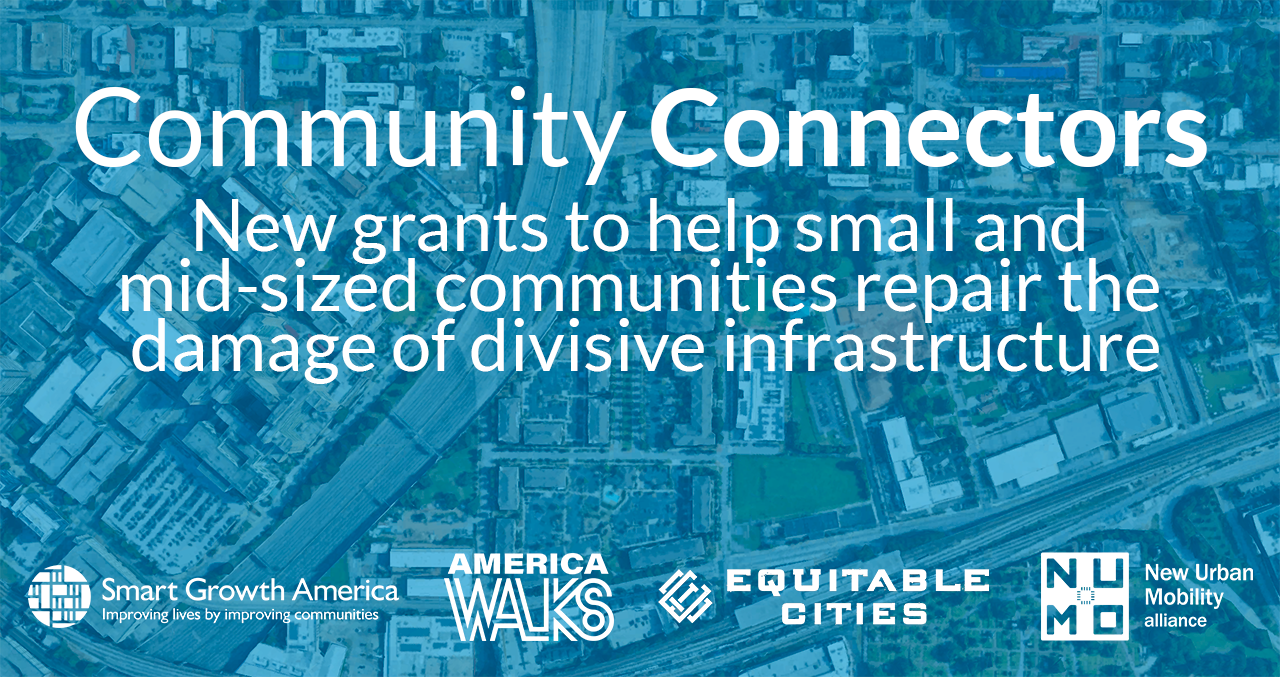What is transit capital?
In this case, “transit capital” refers to the projects undertaken by public transit agencies to expand or improve their systems. This can include land, guideways, structures, stations, and rolling stock (vehicles). Capital budgets are often discussed in comparison with their operating budget counterparts. Public agencies of all sorts are tasked with keeping their operating and capital budgets strictly separate, and the two are often administered by entirely distinct offices.
Ever since President Lyndon Johnson created what we now know as the Federal Transit Administration (FTA) in 1964, transit agencies nationwide rely on its support to advance their various capital programs and projects.
Direct funding opportunities
Some FTA support is provided directly to the agencies that spend it. The programs are split into formula programs that are doled out annually in roughly the same amounts, while others are competitive, requiring agencies to submit applications to FTA for the funding.
Formula programs
Urbanized Area Formula Grant Program (49 USC 5307)
The largest portion of the FTA’s grantmaking authority, the Urbanized Area Formula Grant Program program provides direct, annual funding on a formula basis to large transit agencies that serve over 200,000 people.
Grants for Buses and Bus Facilities Formula Program / Rural Allocation (49 USC 5339(a))
These grants fund states and transit agencies for capital projects related to purchasing, replacing, or rehabilitating buses, bus equipment, and bus facilities. Bus operators (transit agencies) or state funders of transit agencies are both eligible.
Paratransit Formula Grant Program (49 USC 5310)
This program provides annual funding on a formula basis to transit agencies nationwide. The purpose of those funds is to support the transit mobility of seniors and persons with mobility impairments. The program funds both capital and operations of paratransit services for mobility challenged individuals or the capital enhancement of fixed service transit that exceeds ADA guidelines. 60% of program funding goes to large urban areas (200k+ population), 20% goes to small urban areas (50k-200k), and 20% goes to rural areas.
State of Good Repair Grants (49 USC 5337(f))
FTA provides $4.1 billion annually in formula grants to state and local transit agencies to finance capital projects that maintain public transportation systems in a state of good repair. If an agency serves a population of under 200,000 people, however, their State of Good Repair Grants must first pass through their state legislature for apportionment. The program also includes a new $300 million annual competitive grant program to fund Rail Vehicle replacement. That component considers the size, rail rolling stock age and condition, current State of Good Repair Grants funding, and replacement priority within the transit asset management plan of the applicant’s system.
Competitive grant/loan programs
Capital Investment Grants (CIG) Program (49 USC 5309; 49 USC 22902)
The FTA’s flagship competitive grant funding program, CIG funds transit capital investments, including heavy rail, commuter rail, light rail, streetcars, and bus rapid transit. Larger projects fit into the categories of New Starts or Core Capacity projects, which require both project development and engineering approval. For smaller transit capital projects, categorized by the FTA as Small Starts projects, the law requires completion of one project development phase, and projects are rated by the FTA along the way. CIG funds are distributed upon the bases of these ratings. Advocates can push for a smoother approval process. The criteria for grant approval are local capacity, the quality of the associated transportation improvement plan (TIP), and the progress made toward a state of good repair.
Rural Surface Transportation (RST) Program (23 USC 173)
Though this well-funded program is largely intended for roads in rural areas, transit projects are also excellent fits for the RST program. This program funds projects that are central to integrated mobility management systems and improve access to healthcare, emergency care, and other essential services. Projects must be a form of transportation demand management to qualify and located on a highway (as defined in US code). Note that transit projects like bus rapid transit (BRT) and rail often meet all four of these requirements by their very nature, but applicants will need to be specific about how their particular project matches the criteria.
Grants for Buses and Bus Facilities / Rural Allocation (49 USC 5339(a))
This is the discretionary component of the similarly named formula program above and abides by the same eligibility requirements. Though these competitive grants existed prior, the IIJA requires 15 percent of all funds to go to rural areas, so rural communities wanting to develop better bus capabilities can seek these grants more effectively than in the past.
All Stations Accessibility Program (IIJA Division J Section VIII)
This $1.75 billion competitive grant program is available for states and local government applicants to fund capital projects at legacy rail fixed guideway systems that improve station accessibility for persons with mobility challenges. Think installing an elevator in an old Metro station to provide access to those who cannot take the stairs.
Transportation Infrastructure Finance & Innovation Act (TIFIA) (23 USC 601-610)
The TIFIA loan program provides credit assistance for projects of regional and national significance, including transit capital projects. Eligible applicants include state and local governments, transit agencies, railroad companies, special authorities, special districts, and private entities.
Railroad Rehabilitation and Innovation Financing (RRIF) Loans (49 USC Chapter 224) (NEW) The RRIF program, which is operated by the Build America Bureau, provides loans to states, local governments, interstate compacts, government backed entities, and railroad owners to finance railroad infrastructure (capital) projects. RRIF is often utilized by long-distance rail operators like freight companies and Amtrak, but is also frequently sought out by commuter rail transit operators, with recent loans going to Sound Transit and the Massachusetts Bay Transportation Authority (MBTA).
Reconnecting Communities and Neighborhoods (RCN) program (23 USC 177) (Pub. L. 117-58 § 11509; Division J, title VIII)
RCN combines the Reconnecting Communities Pilot (RCP) Program with the Neighborhood Access and Equity (NAE) Program. The program makes available about $3.3 billion per year for projects that advance community-centered connection transportation projects, with a priority for projects that benefit disadvantaged communities. States, MPOs, Tribal and local governments can apply for RCN funding for many types of connectivity projects, including transit capital projects that provide affordable access to essential destinations like jobs and services.
Indirect funding opportunities
While there are direct funding opportunities for transit capital projects, there are other funding streams that are in the control of the State Department of Transportation (State DOT) or a metropolitan planning organization (MPO) that can be leveraged to fund transit capital projects.
State-administered formula programs
National Highway Performance Program (NHPP) (23 USC 119; 23 USC 217)
The NHPP is a formula program that accounts for ~59% of a state’s total funding apportionment from the Federal Highway Administration. Transit capital projects are eligible NHPP expenses so long as they are adjacent to or on a roadway corridor designated as part of the National Highway System (NHS). Though the decision to spend NHPP dollars on transit is up to state departments of transportation, which are often reluctant to do so. Roadways can be designated or removed from the NHS by state petition to the USDOT Secretary.
Surface Transportation Block Grants (STBG) (23 USC 133 (h); 23 USC 142 (a)(3))
The STBG is a formula program that accounts for ~29% of a state’s total funding apportionment from the Federal Highway Administration. All transit capital projects are eligible projects for STBG funding, though the decision to spend STBG dollars on transit is up to state departments of transportation, which are often reluctant to do so. Congress recently opened up the STBG for use in constructing BRT corridors. This can be used for traffic signaling and prioritization systems, redesigning intersections, on-street stations, fare collection systems, information and wayfinding systems, and depots.
Formula Grants for Rural Areas + Indian Tribes and the Appalachian Region (49 USC 5311)
States receive capital, planning, and operating assistance to support public transportation in rural areas with populations of less than 50,000, where many residents often rely on public transit to reach their destinations. The program also provides funding for state and national training and technical assistance through the Rural Transportation Assistance Program. In 2021, Congress funded these grants at $4.6 billion over 5 years to increase the program’s capacity and carved out 5% of the funds for Indian reservations and 3% for the Appalachian region.
Carbon Reduction Program (CRP) (23 USC 175)
The CRP is a 2.56% carve-out from a state’s total apportionment from the Federal Highway Administration. States are required to distribute 65% of the program’s funds by population within the state and can spend the remaining 35% at its discretion. MPOs are responsible for administering program funds in areas over 200,000 in population. The CRP can fund any public transit capital project that can prove that it will reduce carbon emissions from the applicant’s transportation system.
MPO-administered formula programs
Congestion Mitigation and Air Quality (CMAQ) Program (23 USC 149; 23 USC 217)
CMAQ distributes $2.5 billion per year on a formula basis to MPOs nationwide to improve air quality in EPA-identified regions of air quality nonattainment. Projects will need to be included in an MPO’s Transportation Improvement Plan (TIP) to be eligible for CMAQ funding. All transit capital projects are eligible uses of CMAQ funds. In states with no regions in nonattainment, CMAQ funds go to the state government to fund whichever projects it deems fit.
Community Connectors: tools for advocates
 You may be fighting against a freeway expansion. You may be trying to advance a Reconnecting Communities project to remove an old highway. You might be just trying to make wide, dangerous arterial roads a little safer for people to cross. This Community Connectors portal explains common terms, decodes the processes, clarifies the important actors, and inspires with helpful real-world stories.
You may be fighting against a freeway expansion. You may be trying to advance a Reconnecting Communities project to remove an old highway. You might be just trying to make wide, dangerous arterial roads a little safer for people to cross. This Community Connectors portal explains common terms, decodes the processes, clarifies the important actors, and inspires with helpful real-world stories.







